By Sanjb Baruah
If I were a Facebook user I would have surely clicked ‘like’ on the news that the Nationalist Socialist Council of Nagalim (Issak-Muivah) and the Government of India have reached a preliminary peace agreement. But Facebook’s like button can take discussions into a ‘blandly positive’ direction. This is very different from say, the letters to the editor column of newspapers that ‘tended to encourage a formal, "rational" and dispassionate form of public discourse.’1
The signing ceremony on 3 August 2015 at 7 Race Course Road had its poignant moments. To anyone familiar with the long history of the conflict, especially the brutal counterinsurgency campaigns – ‘the buried histories of Indian democracy’2 – it was moving to see the Indian prime minister wearing a regal Tangkhul Naga shawl telling the nation that ‘the Naga problem has taken so long to resolve because we did not understand each other’, and because we looked at ‘each other through the prism of false perceptions and old prejudices.’ No less heartening was his promise that, ‘We will not only try to heal wounds and resolve problems, but also be your partner as you restore your pride and prestige.’ Yet, there isn’t much beyond clicking like that one could do.
The ceremony may have been perfectly designed with the ‘emotional architecture of social media’ in mind. The secret nature of the negotiations, and the paucity of details make it difficult to comment on the future. Not long after Prime Minister Modi said that a ‘historic agreement’ had been signed, it was revealed that what was signed is only a ‘framework agreement’ that still needs considerable work. The peace process is not nearing completion, at least not if one expects sustainable peace to be the outcome. It was the poor health of NSCN (I-M) Chairman, Issak Chisi Swu that dictated the timing of the signing ceremony.
Certain critical thresholds have been crossed. But not all necessary pieces are in place. Even signed peace agreements can fail to produce peace. Examples of failed peace agreements include the Arusha accords of August 1993 that the Rwandan government and the Rwandan Patriotic Front (RPF) had signed only months before the Rwandan genocide.
It is not hard to see why some peace agreements fail. Armed conflicts do not always end in victory or defeat, a significant number of them end in a draw.3 Peace agreements can therefore reflect ambiguous political outcomes. One does not have to look very far for examples. The recurrent episodes of violence that followed the Bodo peace accords of 1993 and 2003 in Assam were quite predictable. The recidivism rate of intra-state armed conflicts is so high that some observers even talk of a ‘conflict trap’. That is why Johan Galtung, a foundational figure in peace and conflict studies, found it necessary to distinguish between ‘negative and positive peace’. If the concern is with peace, and peace is absence of violence he wrote, ‘then action should be directed against personal as well as structural violence.’4 And structural violence, for Galtung, is almost synonymous with social injustice.
All peace processes go through certain predictable phases. The parties have to first make reciprocal moves to build confidence before trying to resolve differences. And only after sufficient common ground is created can they take on the task of designing new institutions consistent with the vision of a new and shared future. In the case of the Naga peace process, the common ground built up till now appears insufficient.
Days after the 3 August signing ceremony, NSCN (I-M) General Secretary Thuingaleng Muivah told supporters that the Government of India and the Naga leaders have realized that there is no military solution to the Naga problem and have agreed to ‘seek a political solution’. Muivah spoke at the 69th Naga Independence Day celebration, commemorating the declaration of Naga independence by Naga nationalist leader Angami Zapu Phizoon on 14 August 1947, a day before India became independent. The event was held at the NSCN (I-M) headquarters in Hebron near Dimapur. He spoke as the Ato Kilonser (prime minister) of the Government of the People’s Republic of Nagalim from a bulletproof enclosure guarded by armed NSCN (I-M) cadres. Before his speech, Muivah unfurled the blue flag of Nagalim. The symbolism of this post-agreement event does not point to a political settlement on the horizon signalling the outbreak of peace.
The NSCN (I-M) leaders have repeatedly stated that two ‘core demands’, Naga sovereignty, and the integration of the Naga inhabited areas, are non-negotiable. Once Muivah told his supporters in Nagamese – a dialect of Assamese that is the lingua franca of Nagaland – that if these two demands were not met and the talks broke down because of that, so be it: Bhangile bhangibo.5
In his speech in Hebron on 14 August, Muivah said that the agreement would enable ‘sharing the sovereign powers’. His use of the ‘s’ word (as in sovereign) not surprisingly, caused immediate consternation in government circles. Some people took it to mean that the NSCN (I-M) remains ‘committed to secession’. However, an unnamed ‘official familiar with the negotiations’ told the media that ‘the criticism was based on a misreading of Muviah’s position’. The phrases ‘sharing powers’ and ‘sovereignty lies with the people’ that apparently appear in the framework agreement, he said, are ‘concepts drawn from the Constitution of India’.6 This is not the only time since the framework agreement was signed that interpreting its implications for NSCN (I-M)’s demand for an independent sovereign state has caused public controversy. On 9 September 2015, Padmanabha Balakrishna Acharya, Governor of Assam and Nagaland, said that the NSCN (I-M) has dropped the demand for a sovereign Nagaland.7 But the NSCN (I-M) responded immediately by saying that the Governor was ‘totally misinformed or ignorant of the framework agreement’.
The statement further said, ‘The framework agreement says that according to the universal principle sovereignty lies with the people, not government. Therefore, the sovereignty of India lies with the Indian people and the sovereignty of the Nagas lies with the Naga people. However, there will be sharing of sovereign power for enduring peaceful coexistence of the two entities. The Nagas will never accept any agreement that betrays their principle.’8
The exchange is not particularly illuminating, but it seems clear that conventional independence and sovereign statehood is no longer on NSCN (I-M)’s political agenda. The organization’s statements are probably best read as what critical theorists call performative utterances. There are a number of phrases in use in the last few years of the Naga peace process that have the same performative effect. For instance, the NSCN (I-M) routinely refers to the peace process as the Indo-Naga talks. Its leaders express appreciation of a statement that former Prime Minister Atal Bihari Vajpayee made in 2003, that ‘Nagaland has a unique history. We are sensitive to this historical fact.’ Vajpayee’s formulation is quoted repeatedly as evidence that the Indian government acknowledges the ‘unique history of the Nagas’.
These statements, along with the new phrase ‘shared sovereignty’, appear to assert that (a) the NSCN (I-M) has not compromised on the ‘core issues’, (b) Nagas and Indians are negotiating as equals – as two ‘peoples’, (c) the Indian government recognizes the Naga conflict to be something other than a ‘separatist’ insurgency, and (d) the final outcome of the peace process will have to be consistent with the idea of Naga exceptionalism. The utterances and the symbolism of the ceremony in Hebron are all designed to stake these claims.
That the NSCN (I-M) could display the political and military symbols of the Government of People’s Republic of Nagalim without interference from the Indian government allows the organization to claim that the latter acknowledges its exceptional (‘sovereign’) status. This ground reality, and the Indian government’s acceptance of an implicit hierarchy between the Naga aspirations for self-determination and that of other groups who are stakeholders in the Naga conflict, may not bode well for the prospects of sustainable peace.
A key criterion that distinguishes armed conflicts and civil wars from ordinary crimes or riots is ‘multiple sovereignty’.9 Charles Tilly defines multiple sovereignty as the condition of a population obeying more than one set of governmental institutions: ‘They pay taxes, provide men to its armies, feed its functionaries, honour its symbols, give time to its service, or yield other resources despite the prohibition of a still-existing government they formerly obeyed.’10
It is hard to describe the power and authority of the NSCN (I-M) as anything other than de facto sovereignty. Multiple sovereignty, in Charles Tilly’s sense, undoubtedly prevails in large parts of Nagaland, and some Naga inhabited areas outside Nagaland. According to the Institute of Conflict Management, India’s leading internal security research organization, the NSCN (I-M) divides its geographical area of influence into eleven regions; in many of those areas it runs a ‘parallel government’. It has four major ministries – defence, home, finance and foreign – and five minor ones: education, information and publicity, forests and minerals, law and justice and religious affairs. The organization’s administrative structure ‘deepens down to the town and village levels’ in those areas. In addition, the organization runs a government-in-exile – the Government of the People’s Republic of Nagaland (GPRN) – that ‘interacts with formal and non-formal world bodies and media’ and ‘sends emissaries abroad to garner support and raise funds’. The NSCN (I-M) has an ‘annual budget to the tune of Rs 200 million to Rs 250 million’ and has a ‘parallel structures of "taxation" (extortion)’.11
Most knowledgeable observers agree that the NSCN (I-M) runs ‘a parallel government in the state, collects taxes, and sometimes dispenses justice as it sees fit’.12 Its position became significantly stronger with the election of the Neiphiu Rio-led Nagaland People’s Front (NPF) to power in Nagaland in 2003. Elected on the platform of facilitating the peace process, the NPF government became openly supportive of the NSCN (I-M) and its parallel structure of government. ‘Our stand of playing the role of active facilitator to the peace process,’ says Rio, ‘was a paradigm shift away from the stand of the previous government and the scenario cleared all hurdles on the home front for the peace process.’13
Prior to his appointment as interlocutor for the Naga peace talks, even Ravindra Narayan Ravi had criticized the retreat of the Indian state in Nagaland. ‘Dressed in battle fatigues and armed with sophisticated combat weapons’, NSCN (I-M)’s cadres, he wrote, ‘freely roam the streets of towns and villages.’ It has ‘set up multiple garrisons, almost in every district’. Ravi accused the central government of that time of giving ‘the militia a free military run of the Naga inhabited areas’.14
The ground reality of multiple sovereignty has implications beyond the borders of Nagaland. Consider the disputed Assam-Nagaland border. The competing claims on land in that area do not just reflect unresolved issues of identity and history. There are powerful contemporary economic motives animating these conflicts.
Agricultural land in this plains area is much more productive than land in the hills. While this disputed border region technically consists of reserve forests, large parts of it are now settled. ‘Under Golaghat district, along the disputed border’, according to one study, there is practically no trace of reserve forest left. There are only ‘huts and the land turned into cultivable fields yielding rich crops’ with settlers who have come ‘from every corner of Assam, Nagaland and even nearby Bangladeshi nationals’.15 A significant segment of the population is adivasi: descendants of tea workers; in some cases their forefathers, recruited to the tea plantations as indentured workers, had settled in these lands bordering tea plantations after their contracts had expired. However, land in this disputed region is now valued for other reasons as well. After a spate of violent incidents in the area in 2007, Hiren Gohain observed: ‘The forest wealth, the rice (cultivated with the help of non-Naga migrant labour) in a food deficit state, and above all mineral wealth like oil (of which there are proven large reserves in the area claimed from Assam) attract a new ruthless class of contractors and wheeler-dealers who would think nothing of killing off numbers of innocent people to lay their hands on these sources of wealth.’16
The Naga peace settlement will affect the political status of this disputed area since it relates to the NSCN (I-M)’s other ‘non-negotiable’ demand: the integration of Naga inhabited areas. Whatever provisions the final peace agreement makes regarding its future status, the prospect of a more empowered NSCN (I-M) with a more legitimate armed presence once a peace agreement is signed, could have a serious impact on these resource conflicts; thousands may be at risk of violent displacement.
R.N. Ravi has said since the signing of the 3 August agreement that ‘whatever be the system that comes out of the entire negotiation process, one thing is very clear, that you cannot have a non-state militia, that is not acceptable. No society can have it.’17 But it is easier said than done. Developments on the ground thus far do not suggest that the demobilization of the NSCN (I-M) cadres and the dismantling of the elaborate infrastructure of its parallel government could be on the immediate agenda. After all, the NSCN (I-M) could legitimately argue that, ‘unless all other Naga groups are disarmed, they will need to retain their capacities to defend themselves’.18
The central government plans to recruit a certain number of NSCN (I-M) cadres into the security forces. But comprehensive demobilization and the decommissioning of weapons is quite another matter. If the final peace settlement does not spell out concrete enforceable steps in order to achieve that goal, it would not be the first time that a flawed peace deal is signed with a rebel group in Northeast India. However, it could have serious consequences. Most observers attribute the successive waves of ethnic violence in the Bodoland Territorial Area Districts (BTAD) of Assam to guns held by ‘former militants’.
A hybrid local political regime where the state and a non-state armed entity constitute an informal partnership – a form of ‘outsourced sovereignty’19 – fits well with certain trends in the political economy of the global South. The so-called informal economy in many parts of the world is implicated in ‘an illicit world of violence and impunity, not just because of the sheer illegality of many of the goods traded, but also because big money trade in guns, drugs, and other contraband products generally necessitates its own ‘armed forces’ for protection.20
The monopolization of the means of violence by the state may not speak to the security needs of the political economy of informal coal mining or of other gray economic activities on the contested Assam-Nagaland border, or that of the guns trade in large parts of Northeast India. From the perspective of actors participating in these illegal but licit economic activities, armed non-state groups in informal partnership with the state may be more reliable providers of security. Viewed from this perspective, Hiren Gohain’s decade-old observation that the key to the discord between Assam and Nagaland may ‘lie not in immemorial ethnic realities, but in the contemporary international economy’ becomes particularly resonant.21 If some form of ‘outsourced sovereignty’ turns out to be one of the outcomes of the Naga peace process, it will not be because any of the key actors had intended it, but because of the rule of unintended consequences.
There have been reports for some time that Facebook has been considering adding a ‘dislike’ button of some sort. ‘Not every moment is a good moment, and if you are sharing something that is sad, whether it’s something in current events, like the refugee crisis that touches you, or if a family member passed away, then it may not feel comfortable to like that post,’ says Facebook CEO Mark Zuckerberg.22 But Facebook is unlikely to embrace the word ‘dislike’. It is utterly inconsistent with the moral architecture of social media.
At this point, enormous uncertainties surround the future of the framework agreement signed between the NSCN (I-M) and the Indian government. Yet it is hard to say that one dislikes it.
Footnotes:
1. Karin Wahl-Jorgensen, ‘The Emotional Architecture of Social Media: The Case of the Facebook "Like" Button,’ https://www2.le. ac.uk/departments/media/news-and-journalism-documents/wahl-jorgensen-talk
2. Nandini Sundar, ‘Interning Insurgent Populations: The Buried Histories of Indian Democracy’, Economic and Political Weekly, 5 February 2011.
3. Paul Staniland, ‘States, Insurgents, and Wartime Political Orders’, Perspectives on Politics 10(2), June 2012, p. 245.
4. Johan Galtung, ‘Violence, Peace, and Peace Research’, Journal of Peace Research 6(3), 1969, p. 172.
5. M. S. Prabhakara, ‘Going Round the Mulberry Bush’, The Hindu, 20 March 2010.
6. ‘Meetings to Seal Naga Deal’, The Indian Express, 2 October 2015.
7. ‘Centre to Absorb Some NSCN (I-M) Cadres into SF: Acharya’, Nagaland Post, (Dimapur), 10 September 2015.
8. Rejoinder to the Press Statement of P. B. Acharya, Governor of Nagaland and Assam, 11 September 2015. http://www. nagalim voice.com/rejoinder/rejoinder-to-the-press-statement-of-p-b-acharya-governor-of-nagaland-and-assam/
9. Roy Licklider, ‘How Civil War Ends: Questions and Methods’, in Roy Licklider (ed.), Stopping the Killing: How Civil Wars End. New York University Press, New York, 1995.
10. Quoted in Ibid.
11. ‘National Socialist Council of Nagaland-Isak-Muivah’, http://www.satp.org/satporgtp/ countries/india/states/nagaland/terrorist_ outfits/NSCN_IM.HTM
12. M. S. Prabhakara, ‘Going Round the Mulberry Bush’, The Hindu, 20 March 2010.
13. Neiphiu Rio, Speech at Consultative Meeting, Niathu Resort, Chumukedima, Dimapur, Nagaland, 25 August 2015, Eastern Mirror (Dimapur), 8 October 2015.
14. R. N. Ravi, ‘Nagaland: Descent into Chaos’, The Hindu, 23 January 2014.
15. Constantine Kindo and Daniel Minj, ‘Territorial Dispute in the District of Golaghat, Assam’, in Lazar Jeyaseelan (ed.), Conflict Mapping and Peace Processes in North East India. North Eastern Social Research Centre, Guwahati, 2008, p. 14.
16. Hiren Gohain, ‘Violent Borders: Killings in Nagaland-Assam’, Economic and Political Weekly, 11 August 2007, p. 3283.
17. Saisuresh Sivaswamy interview with R.N. Ravi, Rediff.com, 12 August 2015. http://www.rediff.com/news/interview/exclusive-how-the-naga-accord-was-r...
18. Ajai Sahni, ‘Nagaland: Tentative Accord’, South Asia Intelligence Review 14(6), 10 August 2015, http://www.satp.org/satporgtp/sair/Archives/sair14/14_6.htm
19. Thomas Blom Hansen and Finn Stepputat, ‘Sovereignty Revisited’, Annual Review of Anthropology 35, October 2006, p. 307.
20. Diane E. Davis, ‘Violence and Insecurity: The Challenge in the Global South.’ MIT Center for International Studies, Cambridge, MA, 2006, p. 3.
21. Hiren Gohain, op. cit., p. 3283.
22. ‘Coming Soon to Facebook: A "Dislike" Button’, New York Times, 15 September 2015. http://bits.blogs.nytimes.com/2015/09/15/coming-soon-to-facebook-a-dislike-button/
_______________________
This article was previously published in the January issue of Seminar and reproduced here with author's permission.
- 13915 reads

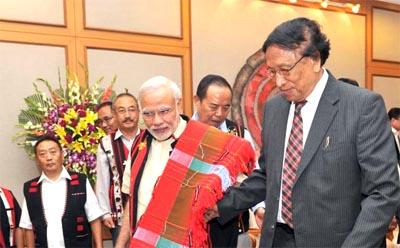


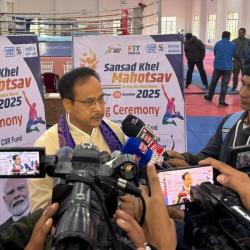
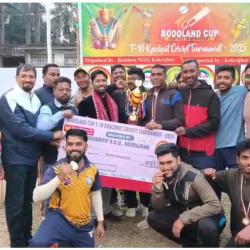
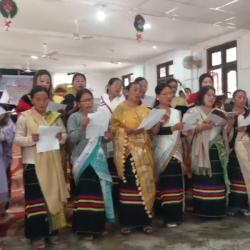

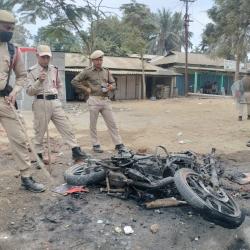

Add new comment